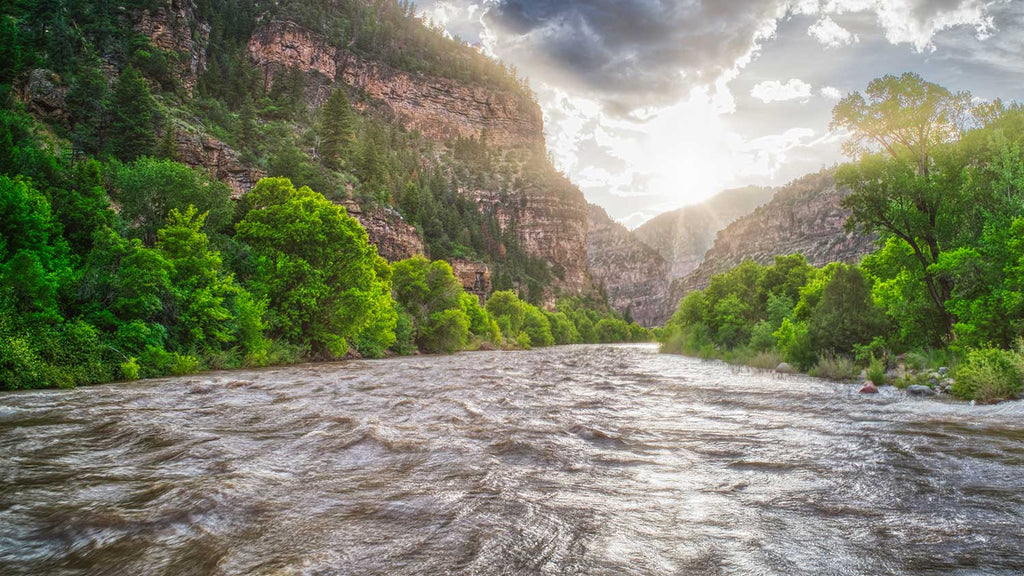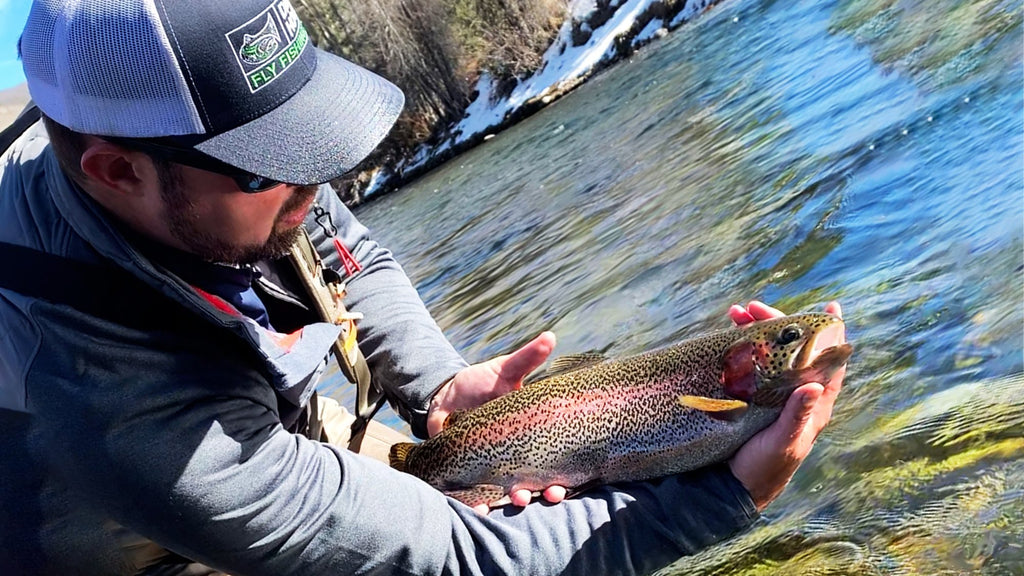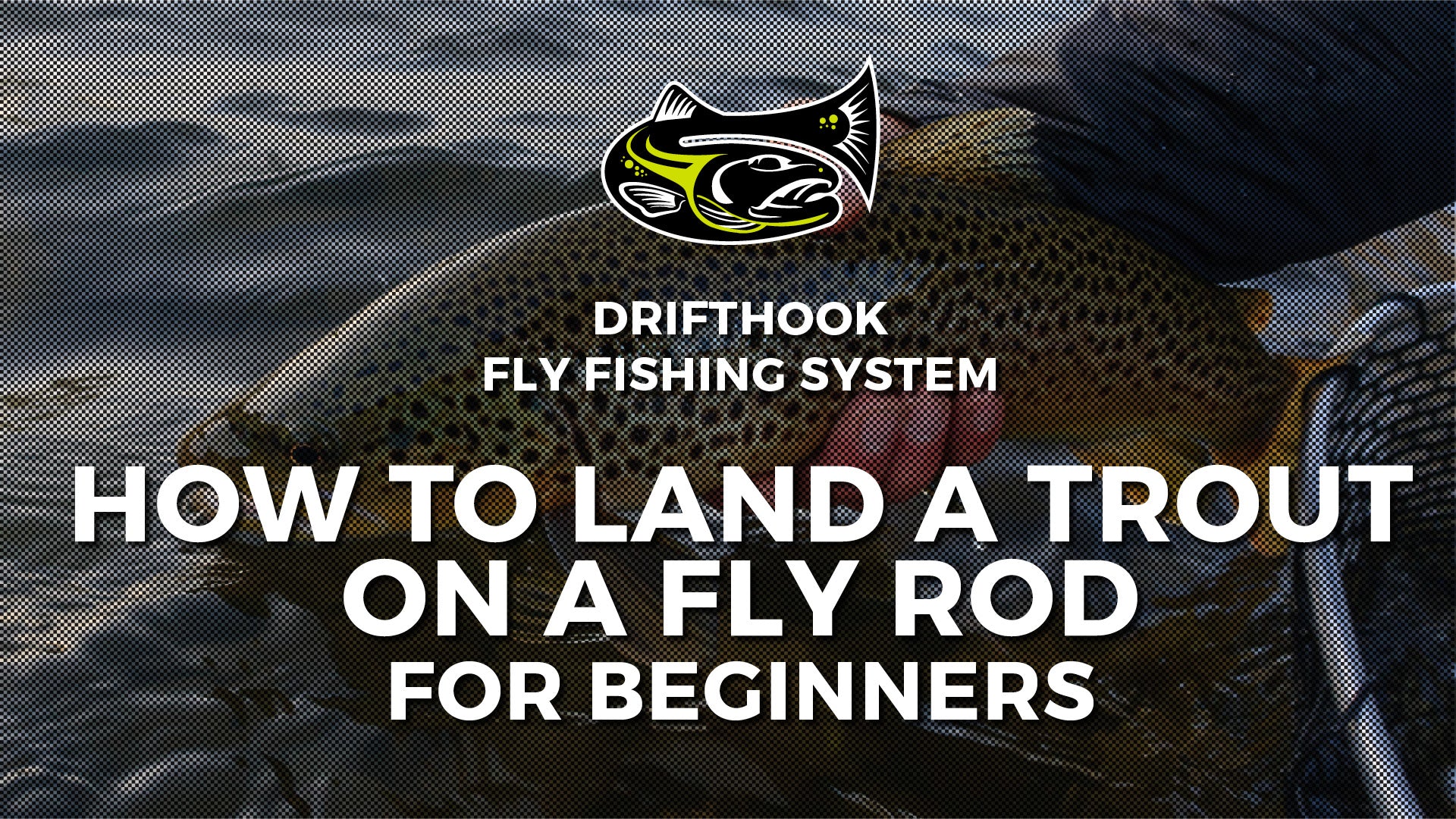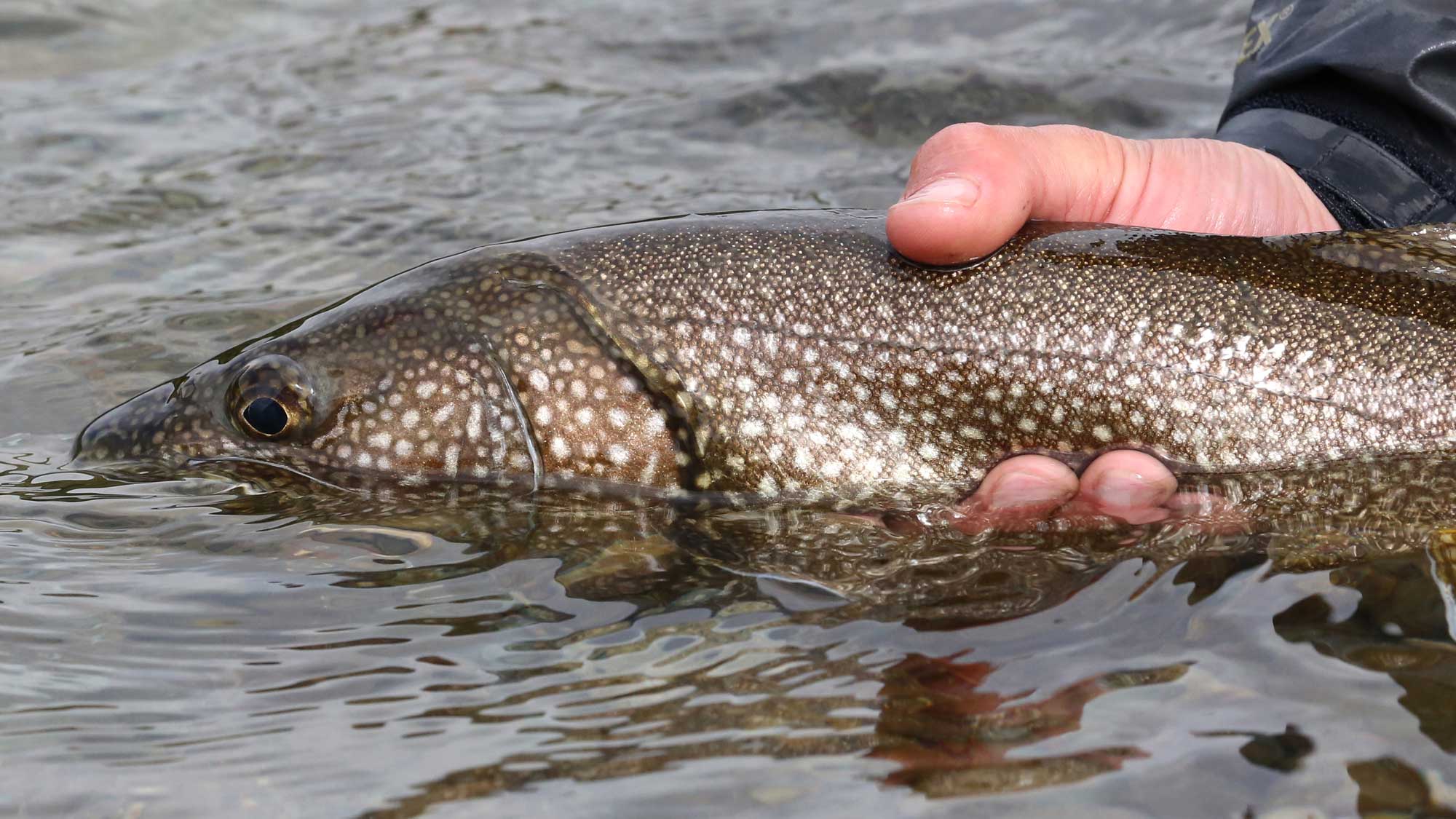
Millions of people around the world love fly fishing. An exciting sport that you can enjoy no matter what the season, it allows you to get out to nature and catch a range of fish – from trout to salmon. When fly fishing, one of the essential pieces of kit is emergers. But what are they? And how do you use them?
A Brief Definition of Emergers
You might be wondering – how do you fly fish with emergers, or what is an emerger? Emergers are used in fly fishing to imitate certain emerging insects such as Midges, Mayfly and Caddis that are hatching out of the water.
Aquatic insect larvae that are hatching swim to the surface to move into the adult stage of there lives. When they get to the surface of the water, they breaking free from there shucks as they try and open their wings for the first time. During this stage, they are very vulnerable to fish – making them easy prey.
Many fly fishers don't utilize the opportunities that come with fish emergers. Heralding the onset of a hatch, emergers are a vital part of a trout's diet. Without imitating an emerger, trout are more reluctant to come to the surface of the water, which is why it's so important to understand the benefits that come with using emergers in trout fly fishing.

When Should You Use Emergers?
The best time to use an emerger when fly fishing is when you notice any action on top of the water. This could be when the fish are coming up to the surface and taking flies or if you see any insect activity in the air. If there is a hatch, then there must have been emerging flies coming to the surface.
If the fish are rising, try using an emerger. However, a lot of the time, you can persuade a trout to take by using an emerger, even when there is no noticeable activity on the surface. Emergers are great patterns for all levels of the water column.
The fish will tend to be concentrating on the surface most prominently during a hatch when insects are falling into the water or as the nymphs are metamorphosing. As long as the water is above 50 degrees, at a reasonable speed and is not thoroughly washed out with mud, then there's no reason why you shouldn't use an emerger.

How to Fly Fish with Emergers
You might be familiar with fishing drys, nymphs, and streamers. Emergers can be fished both in both a dry fly technique or as a nymphing technique, depending on the action on the water.
There are many different techniques that you can use to fish with emergers. To give you a taster, here are two main types – dry fly dropper and the tight line nymphing method. The method that you choose is up to you and what you're familiar with casting. Plus, you'll want to think about the area that you're doing it in – as some methods may be better in specific destinations.

Dry Fly Dropper
When you think droppers, you might think Hopper Droppers. But you can use the dropper scenario on more than just hoppers.
One of my favorite techniques to fly fish an emerger is to do a two fly setup with a larger stimulator dry fly like a Royal Wolf or a Hot Wing Caddis followed by an emerger about 12 to 14 inches off the tail of the stimulator.
This technique allows you to easily follow the larger dry fly and look for any movement that might be a rising trout. If you see anything, go near the two flies, set the hook and hold on for some fun.

Tight Line Nymphing
Recommended to use when fishing in pocket water, the tight line method (also known as tight-line nymphing) describes the technique of using the least amount of fly line on the water and making a direct connection to your flies. Presenting sub-surface flies, this method allows you to control the exact speed and the depth of the emerger.
Another name for this is called high-sticking. The idea is to get the rod tip over the top of your line. By doing this, it allows your fly line is to drop in a straight line from the tip of your rod to the weighted flies below.

The best way of making this effect is to have your lead fly weighted, so it draws the line down. Then have your emerger fly connected to a dropper. Your emerger fly will be in the middle water column, and as it swings, it will rise to the surface.
The great thing about this technique is that you can fish this technique without an indicator as your connection will be tight, and you will be able to feel the takes at a more subtle feel.
There are many more ways to fish emergers, but if you are just starting, try these two for optimal success.

Emerger Patterns: Flush-Floating Vs Descending-Body
According to Jim Schollmeyer and Ted Leeson, Emerger patterns tend to be divided into two main types - "flush-floating emergers" and "descending-body emergers."
Flush-floating emergers are designed to horizontally float on the surface of the water, whereas descending-body emergers are designed to be partially in the water, with part of their body (such as their abdomen) dangling below the surface. It’s important to recognize these two types of emerger patterns, as you might want to alter the one that you use every now and again.
Schollmeyer, J, and Lesson T. Tying Emergers: A Complete Guide (2016); page 21
Flush-Floating Emergers
Flush-floating emergers tend to mimic bigger insects floating on the top of the surface. Often tied on a straight-shank hook with wings that are similar to that of an emerging adult and a trailing shuck, they are effortless to use.
It’s recommended that when using these types of emergers, they are well-supported (so that they sit horizontally) and that they are created using light-weight material that won’t waterlog.

Descending-Body Emergers
This pattern is the more modern of the two. Suspended in its position in the water due to a floating component (such as wings or a float pod), descending-body emergers mimic an emerger when they are partially withdrawn from the nymphal skin.
For this emerger design, you can use a variety of different hooks from scud hooks to straight-shank hooks. Just ensure that the body of the emerger is well balanced so that the abdomen of the fly lays below the surface to entice any trout looking for their next source of food.

Emerger Pattern Examples
Emergers are made from a variety of materials and are unique in their design. As mentioned above, there are two primary types of design: flush-floating and descending-body. To make this even more apparent, here are some examples of emerger patterns:CDC Midge Pupa
Imitating a midge, a CDC Midge Pupa emerger is one of the most popular types available. Available in a variety of sizes (usually from 18-20), colors, and species, this is a descending-body pattern.

Barr Emerger
Also mimicking a midge, a Barr Emerger is simple in design but very effective. A blend of feathers and dubbing, it’s very streamlined. Created by John Barr, it was designed to directly imitate an adult insect coming out of the nymphal shuck; and is, therefore, a descending-body emerger.

RS2
Another popular type of emerger, the RS2 design, looks like a mayfly or a midge. A flush-floating emerger, this type was designed to be presented at the surface of the water but I have found that it is almost more effective in the middle of the water column. Created using a model that was developed over 30 years ago by Rim Chung (a renowned angler and tier from Colorado), the Rim's Semblance 2 tends to be placed on a straight-eye hook.

Spotlight Caddis Emerger
One of the main reasons why this design is so popular is because of the vulnerable stage of the nymph that they portray. Because the tail of the caddis is pointing downwards, trout notice it – making it a very effective emerger.
Realistic and easy to see in the water, it’s clear to see why so many opt for this design when fly fishing throughout the seasons.

Most Common Types of Emergers
We've already covered that there are several emerger patterns. But now, let's get into the three main types of emergers and what they look like.
Mayfly Emerger
Unlike the Caddisfly, a mayfly will not undergo a complete metamorphosis into an adult before reaching the surface. It's the nymph that emerges from the bottom of the water. As they don't have large legs to swim with, they instead move towards the surface with a wiggling motion.
This results in either a failure to get to the surface successfully, or them being drifted downstream. This vulnerability makes them more likely to be caught by trout. Mayfly emergers imitate the shiny body, undulated shape, and small legs of a mayfly. Available in a range of colors, they perfectly mimic the flies.

Caddis Emerger
The pupae stage of the caddis emerges to the surface. Bulky with long legs, they are far more powerful at swimming to the surface than mayflies. Their buoyancy is also thanks to the gas, which is trapped within their exoskeletons.
As they metamorphose entirely, they can take flight almost immediately after they emerge from the surface. This means that the trout only have a limited amount of time to catch them successfully. This is why trout tend to focus on the pupae when they are swimming towards the surface – instead of when they are on top of the surface like the mayfly nymph.

Midge Emerger
The last type of aquatic bug is a midge. Similarly to the Caddisfly, midges will undergo complete metamorphosis before emerging from the water. However, as they are the smallest of the aquatic bugs, they have a very high failure rate of getting to the surface in the first place.
Trout tend to feed on the pupae of the midge, rather than the winged adult – typically eating them when they are just below the service. To imitate midges, the emergers have a thin quill body with strands at the front.

How To Tie an Emerger: The Barr Emerger
If you're tying the emerger yourself to the hook, here is a quick and handy guide you can use. As an example, here are some instructions on how to tie a Barr emerger. Of course, every emerger requires a different technique – so it's a good idea to research this beforehand thoroughly.
- Ensure that the hook is firmly secured in your tying vice.
- Choose a thread that is small in diameter and not bulky.
- Start to wrap the thread on the hook shank behind the hook eye.
- Take a couple of wraps rearward before snipping or breaking off the end of the thread.
- For the flies' tale strip, a few fibers free from the stem of the feather.
- Place the butt ends of the fiber on top of the hook shank and take a couple of thread wraps to secure them.
- Continue taking thread wraps to bind the fibers to the top of the hook.
- Advance the thread forward until you’re halfway up the hook.
- Use scissors to cut hackle fibers off.
- Place the smallest amount of dubbing onto the thread.
- Start to wrap the material around the hook to build a body around the fly.
- End with tying thread at the hook point.
- Flashabou is sometimes used to make the emerger stand out when in the water. To use it, wrap it around the fly, before fastening it with the thread and cutting off the loose material.
- Pull out 8 - 10 fibers of the feather that you’re using for the wings/legs.
- Return the tying thread to the hook point and secure the ends of the fiber to the top of the shank.
- Next, you can create the thorax by using a different type of fur (most commonly beaver fur).
- Strip any guard hairs and wrap the fur around the dubbing thread.
- Start to make wraps with the noodle just behind the hook eye.
- Continue wrapping the thread around the hook so that the fur is secured up to the hook point.
- Push the feather and the shiny piece of material to the front, before wrapping the thread around it.
- Separate the feathers and pull them to each side, to replicate wings.
- Then, cut the feathers back.
Understanding a Trouts Feeding Pattern
In order to be successful with emergers, you must first understand the relationship between a trout and the surface film. They must be keyed on the emergers and not distracted by other things on the surface. By studying how they react with flies on the surface and signs that they are emerging, you’ll stand a better chance of catching them.
As well as looking at their behavior, you also have to acknowledge their feeding patterns – what they tend to feed on (midges, caddis, and mayfly predominantly), where they are feeding (there are hundreds of destinations across the US), when they feed, etc. This way, you will select the right pattern. If you can successfully make a drag-free presentation, landing the fish will be more likely.

What’s the Best Time To Catch Trout?
Following on from the above, when you want to catch trout, you must know the best times to catch them. A good way of doing this is by looking at the seasonal hatching time of the insects.

But another way is by looking at the particular temperatures that trout are most likely to vacate in:
- Trout typically feed in temperatures around 34 - 70 degrees Fahrenheit as they feel the most comfortable
- As the temperature rises, the feeding will pick up – which is why you should keep measuring the temperature each hour of the day to see how it's changed.
- They will avoid feeding in extreme sunshine as they aren’t able to dilate their pupils. So it’s worth fishing when there is cloud cover.
- If the temperature is over 70 degrees Fahrenheit, move upstream to colder water to increase your chance of success.
Dry Flies Vs. Emergers
Although dry flies can prove to be very successful when fly fishing, emergers tend to act as a more visible stimulus to fish below the surface. By penetrating the surface film, emergers are typically more enticing that a high floating dry pattern. Noticeable at a greater distance, the fish will lock onto the prey.Completing its behavioral approach, the trout responds to the potential prey by attempting to eat it. Even though the emerger doesn’t look exactly like other bugs that might be on the surface, its built-in behavioral approach outweighs this distinction.

Top 5 Fly Fishing Destinations
If you're planning a fly fishing trip but not sure where to go, here are five destinations that you could check out. Ideal for those opting to use emergers, they are the most likely places that you'll have a successful catch.
Glenwood Springs, Colorado
Easily one of the most popular fly fishing destinations in the US, Colorado is host to hundreds of thousands of anglers every year. With dozens of rivers to choose from, including the San Juan River and the Platte River, it’s heaven for fly fishing enthusiasts.
Known for the high number of trout in its rivers, in particular where the Colorado River and the Roaring Fork meet, it’s a great place to visit for the sport between April and October. However, it’s also recommended to visit during the off-season when there are fewer anglers – and therefore, a higher fish population.

Alagnak River – Alaska
Situated in Bristol Bay in Alaska, the fly fishing season on the Alagnak River lasts for a couple of months each year. When visiting this region, you’ll notice how the cold climate helps to increase the fish populations and the number of species that are there.
During these few months, there is a high population of rainbow trout, northern pike, salmon, steelhead, and more. Because of the expanse of this river, you can easily cast your lead without having to worry about overcrowding. This makes it ideal when you're using an emerger.

White River – Arkansas
Running from Arkansas to Missouri (722 miles), the White River runs through several dams and lakes (including Lake Taneycomo) with plenty of hot spots for trout.
With so many opportunities to cash your line, it's an excellent choice for both fly fishing novices and experts alike. However, due to its popularity, it's a good idea to visit during the fall (between August and December) when there are fewer people out in the water.

Devils Lake - North Dakota
Another top choice for fly fishing enthusiasts is the Devils Lake in North Dakota. Surrounded by picturesque scenery, there is a variety of fish in the lake, including walleyes, northern pikes, crappies and bass. A saltwater lake that varies in-depth, it can be enjoyed throughout the year.

Bozeman – Montana
For those that love to fish for trout, Bozeman in Montana is the number one choice. Highly productive waters due to the number of insect hatchings year-round, large brown trout that are migrating are attracted to the area.
With lots of spots ideal for fly fishing locales to find, including the Madison, the Bighorn River, the Beaverhead, and more, you won't be lost on places to enjoy.
Here are some other fly fishing destinations that are ideal for catching large trout.

Best Equipment For Fly Fishing with Emergers
When you're fly fishing with emergers, you must be using all of the correct equipment:
- A 4, 5 or 6 weight rod with a floating line – you want a lighter rod so that it’s easier to catch fish throughout the day.
- A 10-12-foot leader – this is an ideal size as you won't lose sight of the end.
- A reel with the right amount of drag - but not too much that your lead extends beyond your reach, and you don't notice when a fish has latched onto it.
- 5x, 6x and 7x tippets – it's recommended not to use stiffer tippets (i.e., 2x or 3x) when using an emerger as you need there to be freedom of movement.
- Chest or pant style waders (although these aren’t always necessary) - this is a personal preference and will depend on the temperature and environment that you’re fly fishing in.

Top Tips For Fly Fishing with Emergers
If you want to try out fly fishing with emergers, you must know the best practices. To put you on the right path, here are some invaluable top tips that you can use:- Try to avoid dragging the emerger for more than 2 or 3 seconds. If a trout realizes that the fly has been on the surface for longer than that time, they might ignore it and think it’s not real.
- Ensure that you keep an eye on where your emerger is at all times when fly fishing. This will make sure that you notice if the trout are coming to the surface, and you don't miss the opportunity of a successful catch.
- If you notice that the trout are feeding on adult flies on the surface, consider switching to a standard dry with a trailing emerger.
- Test out a variety of emergers first to see which one works best for you - a tip that’s worth remembering!
- Make sure that either parts or all of the emerger break through to the surface film - this will make the emerger look far more realistic, causing the fish to latch on more effectively.

Final Thoughts
So, there you go! There is a comprehensive guide to fly fishing with emergers. By distinguishing what an emerger is, the various available patterns, the types of nymphs that there are, and more, you should be in a better position to go out and enjoy fly fishing with them throughout the year.
But whatever emerger that you decide to use, you'll start to notice the difference in the amount that you catch. Whether you're a novice or an expert, emergers are a crucial part of your kit that you should take with you whenever you head out on a fly fishing trip.
Just remember, however, to choose the best location for your fly fishing trip and to use a variety of techniques if you aren’t successful the first time. You’ll find that the more techniques and the different emergers you try, you’ll have a better chance of succeeding.

About the Author
Matthew Bernhardt, a third-generation Coloradan, grew up at the forefront of the state’s fly-fishing revolution, enjoying time on the water, side by side with experienced guides and lifelong anglers.
By combining his passion for fly-fishing with input from other experienced fly-fishers and guides and his fine arts degree from Colorado State University, Matthew spent five years carefully developing the Drifthook Fly Fishing System, built to help every angler catch more trout.
When he’s not spending time with his wonderful family, you’ll find him out on the water catching MONSTER trout, and he anxiously looks forward to the day when his kids are old enough to join him there.





1 comment
walt
Thankyou for taking the time to write this article, it will help my fishing for stillwater using size 20 chironomid emergers. I use an Adams as my indicator with 12" of 6x florocarbon to the emerger, that is tied on with a nonslip loop knot. I have found that I need to have to use a 0.10g weight to get the tippit between the Adams and the emerger to break the surface tension. The water is clear and only 5ft. deep and the surface is flat. I am not able to fool these fish, any suggestion?
Thankyou for taking the time to write this article, it will help my fishing for stillwater using size 20 chironomid emergers. I use an Adams as my indicator with 12" of 6x florocarbon to the emerger, that is tied on with a nonslip loop knot. I have found that I need to have to use a 0.10g weight to get the tippit between the Adams and the emerger to break the surface tension. The water is clear and only 5ft. deep and the surface is flat. I am not able to fool these fish, any suggestion?